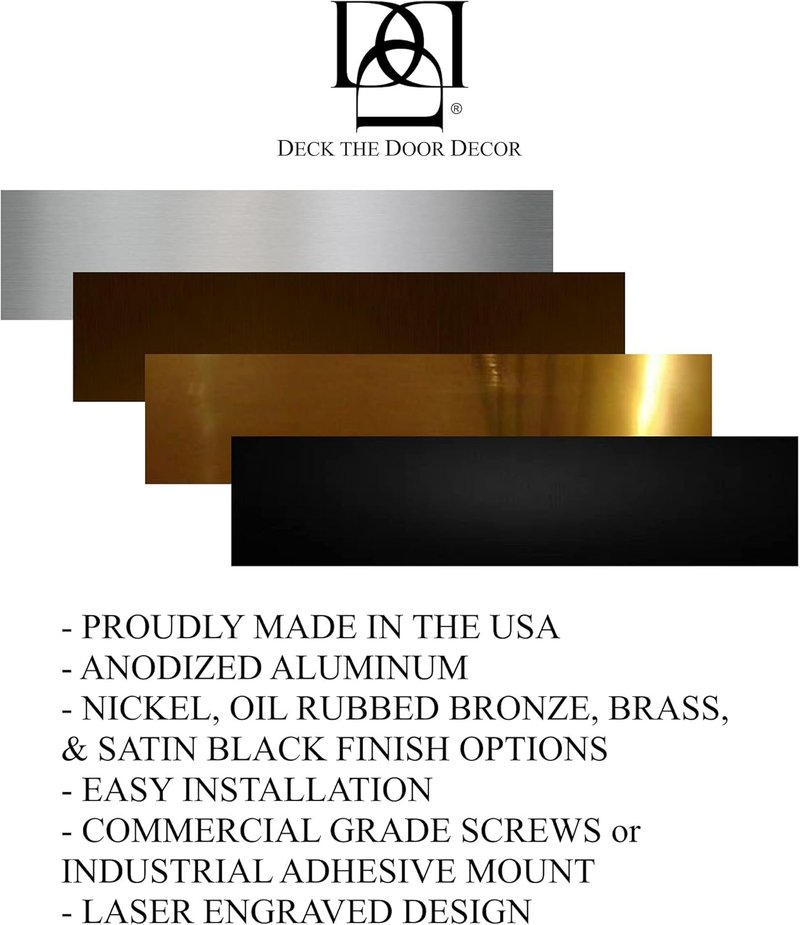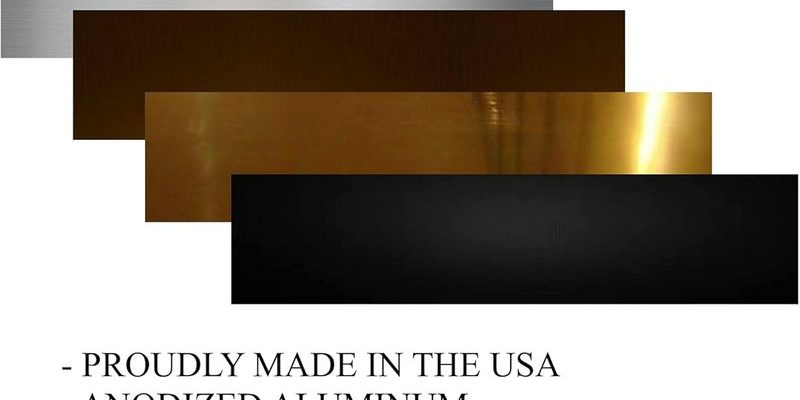
Here’s the thing: not all fiberglass doors are made the same, and the finish (whether it’s smooth, textured, or painted) completely changes what adhesive will actually work. Brands like Therma-Tru, Masonite, and JELD-WEN each have their spin on fiberglass finishes. If you want your kick plate to stay put, you need to match your adhesive to both your door’s exact surface and the daily wear it’ll face.
Why Kick Plates Need Special Adhesives On Fiberglass Doors
For most people, it seems obvious—just grab a tube of glue and slap on the kick plate, right? But fiberglass doors are a different beast. Unlike wood, which soaks up glue, or steel, which can handle almost anything, fiberglass repels many common adhesives. That’s because its surface is typically non-porous and sometimes even coated with a slick finish.
Another thing to consider is *flexibility*. Fiberglass doors tend to flex with temperature changes, expansion, and the thud of a closing door. If your adhesive turns brittle, your kick plate might just pop off—or crack the finish underneath. Plus, different finishes (smooth, grained, or pre-finished paint) can affect how well adhesives stick. You’ll need a product that’s not only sticky, but one that can *move* a little, too.
Honestly, using the wrong adhesive can leave you scraping off stubborn glue residue or, in the worst-case scenario, having to sand and repaint your door. That’s money and time you probably don’t want to waste.
Understanding Common Fiberglass Door Finishes
You might be wondering, “What difference does the finish make?” Well, more than you’d think. Fiberglass doors come in a handful of popular finishes, and each reacts differently to adhesives:
- Smooth finish: This is glass-like and usually found on modern doors. Adhesives can struggle to bond here because the surface is nearly frictionless.
- Textured or wood-grain finish: These have an embossed pattern to mimic wood. The texture adds grip, so some adhesives do better here, but only if they can fill in all those tiny grooves.
- Painted or pre-finished: Some fiberglass doors are factory-painted or have a protective coating. The paint itself can be the weak point, so if your glue bonds to the paint instead of the fiberglass, things can peel off over time.
For example, Therma-Tru’s Smooth-Star line comes with a slick, even finish, while Masonite’s textured doors look and feel more like wood. Each will play nicer with certain adhesives—and be a nightmare for others.
Types Of Adhesives: Which Ones Actually Work?
Let me explain: not every glue lives up to the hype, especially on fiberglass. Here’s a breakdown of what’s out there—and what actually sticks.
- Construction adhesives: Brands like Liquid Nails or Loctite offer heavy-duty construction glues suitable for a range of surfaces. The trick is to pick a version labeled for “plastic” or “fiberglass.” These adhesives are strong but can be thick and hard to spread evenly on a thin kick plate.
- Two-part epoxies: These come in two tubes you mix together. Epoxies like J-B Weld create a rock-solid bond, especially on textured finishes. Downside? They can cure too hard, so if your door flexes a lot, the bond might crack.
- Polyurethane adhesives: Like Gorilla Glue, these expand and fill gaps, making them great for uneven or textured finishes. Just be careful not to use too much, or you’ll get a foamy mess on the edges.
- Double-sided mounting tape: 3M’s VHB tape is a lifesaver for quick projects, especially on super-smooth finishes. It sticks instantly and doesn’t require clamping. But it’s not always great in very hot or cold weather.
Bottom line: Construction adhesives and high-quality tape are the usual go-tos, but you need to match them to your specific door finish for the best results.
How To Prep Your Fiberglass Door For Maximum Stick
Before you even uncork the glue, there’s one crucial step: surface prep. Sounds boring, but skipping it is the number-one reason kick plates fall off.
First, you’ll need to clean the area where the kick plate will go. Use a gentle degreaser or rubbing alcohol to remove dust, oils, or leftover wax. You want it squeaky clean, but don’t use harsh abrasives—they can scratch or dull the finish, which isn’t a good look.
Next, lightly scuff smooth or glossy finishes with a fine-grit sandpaper. This gives the adhesive something to grab onto. For textured doors, just make sure all dirt and loose paint are gone. If your door’s painted, check for any loose or flaking areas and fix them first—you want a solid surface underneath.
Finally, lay out your kick plate and mark its position with a pencil or painter’s tape. This helps you avoid last-minute slipping around, especially with quick-setting adhesives. Trust me, once that glue touches fiberglass, you don’t get a second chance to “nudge” things into place.
Step-By-Step: Applying A Kick Plate With The Right Adhesive
Here’s a straightforward process to get that kick plate on securely, whether you’re dealing with a JELD-WEN textured finish or a Therma-Tru smooth surface:
- Test the fit: Hold the kick plate up to the door and double-check your markings. Make sure the plate sits level and centered.
- Apply adhesive: If you’re using construction glue or epoxy, spread a thin, even layer on the back of the plate. For double-sided tape, cover the edges and add strips in the center.
- Attach and press: Carefully press the kick plate onto the door. For tape, press firmly along the entire plate for at least 30 seconds. For adhesives, use painter’s tape or light clamps to hold it in place while it cures.
- Cure time: Follow the adhesive instructions—most require 24 hours for a full bond. Don’t slam the door or test the kick plate until you’re sure everything’s set.
Pro tip: Clean up any excess glue immediately with a damp cloth or the cleaner the adhesive recommends. Once it’s cured, it’ll be a pain to remove.
Matching Adhesives To Brands And Door Styles
You might be thinking, “Does it matter if my door’s a Therma-Tru or a Masonite?” Absolutely. Each brand uses different surface treatments and paints, which affect how adhesives perform.
- Therma-Tru Smooth-Star (Smooth finish): 3M VHB tape or a polyurethane adhesive works well here. Avoid epoxies unless you rough up the surface first.
- Masonite Textured Fiberglass: Polyurethane glue (like Gorilla Glue) fills the tiny grooves and creates a super-strong bond.
- JELD-WEN Pre-Finished: Go for a construction adhesive rated for plastic and fiberglass, such as Loctite PL Premium. Just avoid products containing solvents that could soften or discolor the finish.
In my own experience with a Therma-Tru Smooth-Star, double-sided tape stuck like a dream—until a blazing hot summer melted the bond. Switching to a small bead of Loctite construction adhesive kept it on through every season.
Common Problems And How To Avoid Them
Okay, real talk—sometimes things go sideways. Maybe your kick plate slides after a few weeks. Or the corners start to peel up in winter. Here’s what usually goes wrong and how to fix it:
- Adhesive won’t bond: Likely due to surface oils or a glossy coating. Make sure to degrease and scuff before trying again.
- Plate warps or “floats” away from the door: Too much adhesive or tape can create a gap, especially on textured surfaces. Use a thin, even layer for best results.
- Finish is stained or damaged: Some adhesives contain solvents that react with fiberglass paint or coatings. Always check the adhesive’s compatibility—or test a tiny, hidden spot first.
- Bond fails in extreme weather: Not all adhesives handle heat or freezing temps well. If your door faces a lot of sun or cold, choose products rated for those conditions (like polyurethane-based glues or weatherproof tape).
Are There Alternatives To Adhesive-Only Installs?
If you’re nervous about using glue—or want extra security—there are a couple of backup options. Some kick plates come with pre-drilled holes for screws. You can use self-tapping screws made for fiberglass but be gentle to avoid cracking the finish. If you go this route, always add a dab of clear silicone or polyurethane sealant under the plate. That way, you get both a mechanical and chemical bond, plus a moisture barrier.
Another route? Some modern kick plates use snap-on or magnetic systems, which work for steel but not fiberglass. Don’t waste your time there unless your door has a metal core.
For renters, strong mounting tape is often the best compromise. It holds well, removes cleanly, and doesn’t risk permanent holes or glue stains.
Final Thoughts: Choosing The Best Adhesive For Your Fiberglass Kick Plate Project
Attaching a kick plate to a fiberglass door isn’t rocket science—but it does take a little know-how and the right adhesive for the job. The “best” adhesive depends on your door’s exact finish, the brand, and your climate. For smooth, painted doors, double-sided tape or polyurethane adhesives are your safest bet. For textured or wood-grain finishes, go with polyurethane or construction adhesives that flex a bit.
Don’t skip the prep work: clean, scuff, and test before you commit. If you’re feeling extra cautious, combine screws with adhesive for a bond that’ll withstand years of kicked shoes, muddy boots, and whatever else your front door faces.
The right adhesive makes your kick plate look sharp, stay secure, and keeps your fiberglass door looking new. Take your time, choose carefully, and you’ll never have to worry about a loose kick plate again.
